The Gardaí in the 1920s – A Troubled Beginning
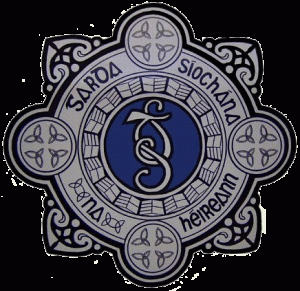 By Colm Wallace, whose new book The Fallen details Gardaí who lost their lives in the line of duty.
By Colm Wallace, whose new book The Fallen details Gardaí who lost their lives in the line of duty.
The Gardaí have faced several periods in their history in which the safety of individual members was a very real risk. World War II, or “the Emergency” as it was colloquially referred to in Ireland, saw six Gardaí being shot dead in fire fights.
The Troubles saw violence spilling over the border into the Republic, particularly in the 1970s and early 1980s, and several officers would pay the ultimate price for devotion to duty. More recent times have also produced tragedies, dissident republicans and gangland criminals still capable of extreme violence against the forces of law and order. The 1920s, the first decade of An Garda Síochána, may still be considered the most dangerous time of all, however.
The 1920s was the most lethal decade for the Garda Síochána
After the Anglo-Irish Treaty was ratified by the Dáil in January 1922, one of the most important tasks of the new government was the deployment of a new police force. The much maligned Royal Irish Constabulary had been brought to its knees during the War of Independence, more than 400 members of the force being killed in the line of duty in the 1919-1921 period.
The Treaty proposed the disbandment of the RIC by August 1922, leaving the pro-Treaty government with the unenviable task of formulating a new police force from scratch in a matter of months. The first meeting about the new policing body was held in 9 February 1922 in the Gresham Hotel. Recruitment to the “Civic Guard” would begin less than two weeks later.
After a number of tragedies involving firearms it was decided that the new force would be unarmed. Meanwhile, regular incidences of crime, agrarian violence and attacks on landowners necessitated the swift deployment of these new recruits. By September, the first detachment of Gardaí were deployed.
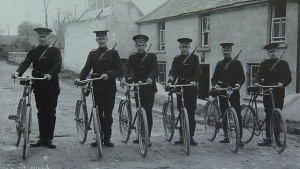
Tracts of the country, particularly Munster, remained paralysed by violence however and were not considered safe for the new recruits.. It was widely speculated that the unarmed Guards were left vulnerable to attacks by members of the anti-Treaty IRA and between September 1922 and the summer of 1923 over 200 Garda Stations were attacked, bombed or burned; 400 Guards were meanwhile assaulted, stripped or robbed.
It seemed only a matter of time before a Garda would find himself on the wrong end of an IRA bullet – so it proved. Henry Phelan was shot dead on 14 November 1922 in a pub in Mullinahone Co. Tipperary after he had gone on an expedition with two colleagues to buy a sliothar.
Over 200 Garda stations were destroyed in the Civil War of 1922-3 but only one Garda was killed.
Three armed men had entered the pub, ordering the Guards to put their hands up. Before they had a chance to do so, however, the first gunman fired a shot, striking Phelan into the jaw and killing him instantly.
The gunman then muttered something about it being an accident before making a swift exit. Phelan’s death was greeted with outrage nationally and although two arrests were made two years after the murder, the identity of the killer was never officially revealed despite having been well known locally. No-one was ever charged with the murder.
Somewhat surprisingly, no other Garda would die during the civil war although this run of good luck would come to an abrupt halt on 3 December 1923. Sergeant James Woods was just 23 when he was placed in charge of Scartaglen Garda Station in Co. Kerry. The Clare native was well respected in the locality but on that night a large group of republicans attacked the station, taking belongings and roughing up the Gardaí inside. They forced the sergeant to climb a ladder towards the second storey of the building.
The aftermath of the Civil War was more dangerous as the Garda took over policing in many areas from the Army.
As he was doing so, one of the raiders gave him a butt with his rifle to try and force him to hurry his progress. Unfortunately, the gun went off and a bullet hit Woods into the back of the head killing him instantly. The raiders fled the scene and a huge manhunt was inaugurated in Scartaglen. Large numbers of troops converged on the village, Lieutenant Jeremiah Gaffney amongst them. On 6 December, three days after Woods’ death, Gaffney shot 18 year old local man Thomas Brosnan dead.
He claimed that Brosnan had been involved in Sergeant Woods’ death, an accusation which was later found to be baseless. The brutal murder caused uproar and disgust throughout the country and it transpired that Gaffney had committed the outrage due to a personal grudge against Brosnan. The Free State soldier was found guilty of the murder and hanged on 13 March 1924. As for Woods’ killing, despite one local man being arrested and charged, no-one would ultimately be punished.
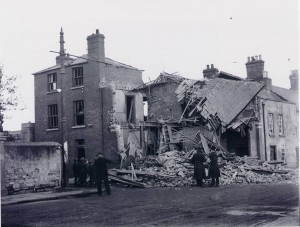
Garda Patrick O’Halloran was shot dead after attempting to apprehend two bank robbers in Baltinglass Co. Wicklow in January 1924. The two robbers, Felix McMullen and Peter Jordan, had just been demobilised from the national army and were found after a national manhunt. McMullen, the man who had fired the fatal shot, was eventually found guilty of murder and sentenced to death.
Appeals for clemency were not heeded and Fermanagh native McMullen was hanged by Thomas Pierrepoint in August 1924. He would be the only person convicted of murdering a Garda in the 1920sl, although several more would die.
Two Gardaí would be killed on the same day for the first time on 5 May 1924. Sergeant Thomas Griffin and Garda John Murrin went to a house near Carrick-on-Suir, Co Tipperary. They were attempting to apprehend a local man, Sonny O’Dwyer, who was alleged to have shot at their colleague the previous day.
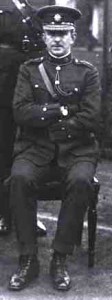
When they arrived at a house belonging to O’Dwyer they were accosted by the wanted man who immediately shot both Gardaí before fleeing. Griffin would die the day after the shooting, although not before signing a lengthy statement about the day in which he implicated O’Dwyer. Murrin lingered on for six months but would also succumb to his injuries. Although the identity of the suspected shooter was well known, he would never be discovered.
This poor apprehension rate of Garda killers looked set to come to an end after the shooting of Garda Thomas Dowling in Fanore, Co. Clare in December 1925. An ambush had been set up to shoot a Garda at a graveyard in the village.
Although Dowling was not the intended target, he would be shot dead. Local distillers of the illegal alcohol poteen who had been arrested by Gardaí previously were thought to have been responsible for the brutal killing. Two local men were swiftly arrested and charged with the murder. A strong case was built up by the prosecution and a guilty verdict appeared imminent. A number of witnesses withdrew their evidence in court however, and the case against the two men collapsed, allowing them to walk free.
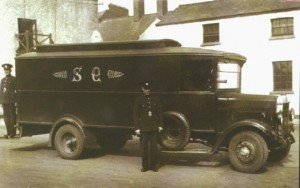
1926 would be the fifth year in a row where members of the Gardaí met their death in the line of duty. Co-ordinated raids were undertaken by the IRA on Garda stations on 14 November 1926, allegedly seeking to take papers relating to republican activity.
Over a dozen stations nationwide were hit; in two incidences with fatal consequences. Sergeant James Fitzsimons was shot dead after confronting the raiders in the hallway of St. Luke’s Barracks in Cork City.
On November 14, 1926 the IRA launched a series of coordinated raids on Garda stations, shooting dead two Gardai.
Garda Hugh Ward was also shot on the night when he opened the front door of Hollyford Barracks in Co. Tipperary. The daring raids would be used as the basis for the introduction of legislation against the IRA, but once again the killers would remain unpunished.
The last Garda killed in the decade was Detective Timothy O’Sullivan. Skibbereen native O’Sullivan was stationed in Kilmihil in West Clare, an area well known for anti-government feeling in the 1920s. He was amongst a number of detectives drafted in to the area, which had been beset by agrarian violence for some time. A hard line was taken against local republicans, who responded in brutal fashion.
An anonymous letter was sent to Knock Garda Station, informing Detective O’Driscoll that a box full of “treasonous documents” was lying in a field in Tullycrine, near Kilmihil. O’Driscoll went and fetched the wooden box, bringing it to O’Sullivan and another colleague to discuss what to do.
The men attempted to open it using a piece of wire, an endeavour that failed. O’Sullivan then knelt down and forced the lid open. This activated a devastating mine which killed the detective instantly and badly injured his colleagues. Once again, much of the country was horrified and clamoured for the apprehension of the suspect. Despite a huge Garda operation, including numerous accusations of brutality against suspects, the people who had sent the letter and planted the bomb were never discovered.
The 1920s would draw to a close shortly after Detective’s O’Sullivan’s death and the following decade would prove to be somewhat calmer. Unfortunately, the targeting of Gardaí on duty has continued in more recent times and deaths of members of the force continue to occur. At the time of writing, 88 Gardaí have lost their lives in the line of duty. Although many have been accidental, dozens have been little more than murder. The cases mentioned in this article are just the tip of the iceberg. The 1920s was a dangerous time for ordinary Gardaí; the present day poses similar risks.
See also, Colm Wallace’s article on a murder in County Kilkenny in 1923.